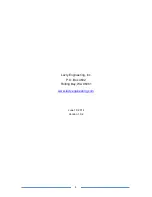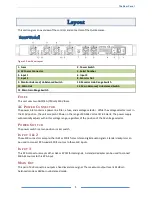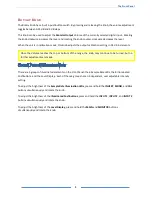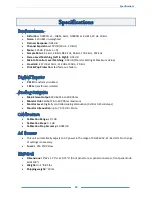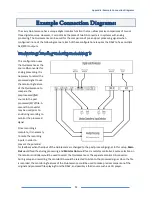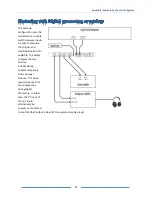
Passive Features
9
Passive Features
This section assumes that you have read the
Layout
section of the manual, and are familiar with the basic
operation of the front panel controls as well as the input and output connections and switches.
The unit retains all settings in non-volatile memory. When the unit is powered on, the last used settings are
loaded from memory.
During switching between either Mono/Stereo or Polarity Invert On/Off, the volume ramps down and then
ramps back up to prevent pops and cracks due to signal discontinuity.
This unit enables quick comparison of music before and after processing, with level matching accuracy up to
0.25 dB. Inputs signals may have different sample rates and word lengths. During input switching, the
volume ramps down to mute while the unit stabilizes to the new signal; afterwhich, the volume ramps up to
the new input level. This process is fast enough to compare music, but slow enough to prevent pops and
clicks.
The unit is minimizes the audible impact which occurs when changing between settings by fading the volume
up/down as necessary. This is useful to protect ears and speakers from damage.
Muting the
Main Out
or
Monitor Out
begins with a volume fade out and ends by hardware shorting the
output. On unmuting or unit power-up, this process is reversed.
Muting or unmuting
Monitor Out
will have no effect on
Main Out
. When muting or unmuting
Main Out
a
moment of silence will be heard on
Monitor Out
.
Before switching to an input with an unknown volume setting, it is advisable to first mute the monitor
output. Then after switching inputs, proceed to lower the volume setting, unmute the monitor output,
and raise the volume. This will prevent damage which may result when switching to a much higher
volume.


